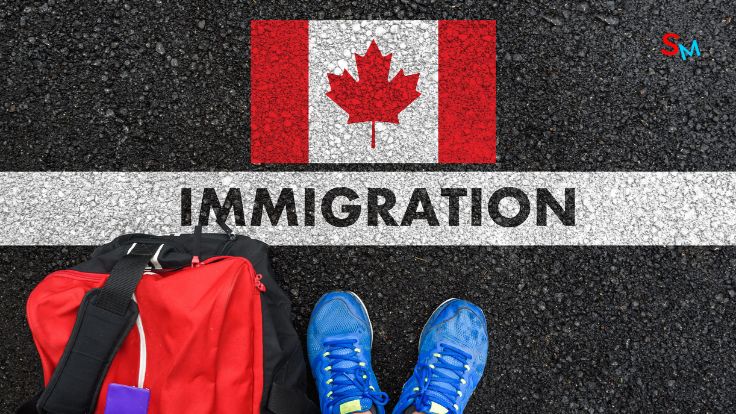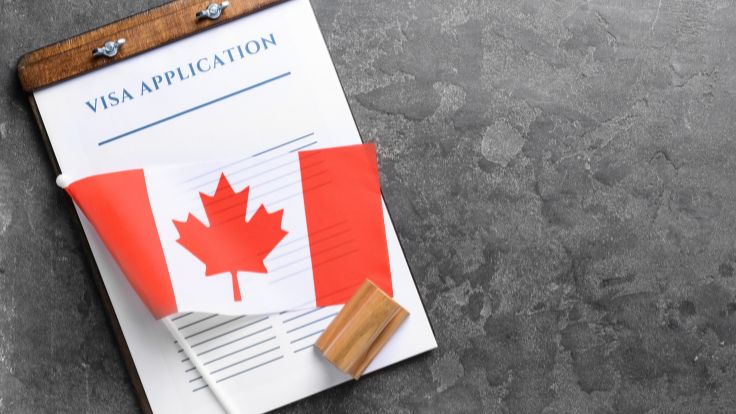Have you ever wondered how people move to Canada to live permanently? Canada’s Express Entry system makes it possible for skilled workers to apply for permanent residence. It’s like a fast track for people who want to live and work in Canada.
Here’s how it works: applicants with the right skills and work experience create profiles online. After applying, they are ranked based on their qualifications. Those who score high are invited to apply for permanent residence. It’s a straightforward process designed to attract talented people from around the world to make Canada their new home. Let’s dive into how this system works and what it means for those dreaming of living in Canada!
There are various ways to get a permanent residence (PR) visa to emigrate to Canada. The first step, therefore is to decide which route is best for you.
WHAT IS PERMANENT RESIDENCY?
If you have permanent residency (aka PR), it means that you’ve been given permanent residency status from the government and you’re allowed to live and work in Canada long-term.
This is different to the IEC Working Holiday Visa. The IEC visa allows you to live and work in Canada for up to 2 years, however, you cannot extend the IEC visa. If you want to remain in Canada for longer, aside from getting a work permit (which allows you to work in Canada temporarily), permanent residency is your best option.
If you have permanent residency it means you can live in Canada permanently. However, your PR status isn’t granted forever and may be taken away if you leave the country for an extended period of time. Your PR card needs renewing every 5 years, and in order to keep your PR status, you must have been in Canada for at least 730 days out of the last 5 years.
DOES PERMANENT RESIDENCY MEAN YOU’RE A CITIZEN OF CANADA?
No, permanent residency and citizenship are different. If you have PR, you are not a Canadian citizen.
However, you can apply for Canadian citizenship after you’ve lived in Canada as a permanent resident for at least 1095 days out of the 5 years before you apply. When you’re a citizen, you can live in Canada indefinitely and you can get a Canadian passport. If you’re in Canada on a student visa, a work pemit or an IEC visa, then you are considered a resident of Canada, but you are not a permanent resident.
TYPES OF VISAS FOR PERMANENT RESIDENCY IN CANADA
There are numerous different immigration routes available if you’re looking to move to Canada permanently. In this post, I’m going to focus primarily on Express Entry as that’s what I have the most experience with.
Other immigration visas include the Provincial Nominee Program, The Skilled Workers Program, Start-up Visa, and Caregivers Program. See here for more info about different types of PR visas.
WHAT IS EXPRESS ENTRY?
Express Entry is Canada’s fast-track immigration program and it’s designed to help skilled workers immigrate to Canada. Here are a few quick facts about Express Entry:
Express Entry is for skilled workers who want to live and work in Canada.
It’s open to all nationalities, however, you must take an approved language test in either English or French and meet the minimum language requirements in order to be eligible to apply.
You must be able to demonstrate you’ve had work experience in a skilled occupation in the last 10 years. Your occupation must fall under the NOC codes and your occuption must be classified as skilled. For Express Entry, your work must fall under skill type 0, A or B.
It is a points-based visa program. Your eligibility is dependent on factors like skills, work experience, education, language ability, and age. You accumulate points based on these factors and you must meet the minimum number of points to be eligible for the program.
You’re scored out of 1200. The minimum score that they accept varies each month. The minimum usually sits between 350-450 points but it changes regularly.
It can take anywhere between 6 months to 1.5+ years to complete your full PR application depending how quickly you get selected from the pool. You are also not guaranteed a visa and your application can be rejected if you aren’t an eligible candidate or there are errors in your application.
You don’t necessarily need a job offer in order to apply, but you will be allocated more points if you do.
You don’t need to have lived or worked in Canada in order to apply, but you will be allocated more points if you have Canadian work experience.
The Express Entry visa application costs $1040 CAD per person. This excludes the cost of hiring an immigration specialist to help with your application or the cost of applying for additional programs (such as PNP).
There are 2 main stages to the application. Stage 1 involves submitting your details and entering the eligibility pool. While in the pool, you will be ranked against other candidates based on your score. Stage 2 involves being selected from the pool and invited to submit your PR application. You pay your $1040 fee at stage 2 when you submit your application.
If you’re married or common-law, you will apply as a couple. You can also apply as a family with your children.
The process involves a lot of paperwork and you must answer everything truthfully and accurately. It’s a strict process with various deadlines in place when you complete the application. Your application can get refused if it isn’t completed correctly. If you lie on your application, you could get banned for applying for PR in future.
Express Entry is not the only visa route. There are others that you can explore. See the list here.
Overview of Canada’s Express Entry System
Canada’s Express Entry is an online system that allows skilled workers to apply for permanent residence.
Express Entry manages applications for three economic immigration programs:
- Federal Skilled Worker Program
- Federal Skilled Trades Program
- Canadian Experience Class
After reviewing the different ways, we believe more in applying through the Express Entry System as Federal Skilled Workers. so, this article will therefore focus only on this program.
Steps and Resources for Federal Skilled Worker Express Entry
These are the steps we took and the resources we used throughout the application process:
1. NOC Code
To be eligible for Express Entry you must have previous work experience in the required National Occupation Code (NOC). Additionally, your work experience must be in Skill Type or Level 0 (managerial jobs), A (professional jobs) or B (technical jobs and skilled trades). It must also have been paid work for one (1) continuous year within the last ten (10) years for you to be eligible for this program.
Ensuring your selected NOC code is accurate is critical to approval. Some job titles and responsibilities may be difficult to match so it’s crucial to spend time properly researching.
2. Eligibility
To determine eligibility, IRCC uses a six selection factor point grid and candidates must score at least 67 out of 100 to be considered for the Federal Skilled Workers Program.
We checked our eligibility for the program by answering the online questionnaire which covers many areas including age, education, work experience, language skills, size of family and relatives in Canada.
3. Comprehensive Ranking System (CRS score)
Once you’ve passed the six selection factors and have entered the pool of eligible candidates, IRCC then ranks the applicants based on a Comprehensive Ranking System (CRS).
So, the next step is to check where you may rank, before proceeding.
HOW DO YOU CALCULATE YOUR POINTS FOR EXPRESS ENTRY?
If you haven’t already, I suggest you start by calculating your CRS score. Your score is important as it determines your eligibility for the Express Entry program. So, it’s good to know your rough score before you start the process to verify whether you’ll have enough points. You’ll be scored out of 1200.
The minimum score needed to apply varies each month, however it hovers between 350-450. For example, in October 2019, the lowest CRS score accepted was 357, whereas in January 2020 the lowest CRS score accepted was 457. Candidates are invited to apply every month. See this page for more info on rounds of invitations.
If you’re married or you have a common-law partner (living together for at least 1 year, that you can prove), one of you must be the principal applicant. The partner with the most amount of points should be the principal applicant. You actually get points deducted for applying with a spouse/partner, however, your spouse/partner can also contribute a small number of points depending on their age, education, experience, languages etc.
4. Express Entry Rounds of Invitations
IRCC holds rounds of invitations where they invite the highest-ranking candidates to apply for permanent residence.
You can decide to do some additional research by checking the current and past draws or round of invitations trend to see where you might rank in the pool of candidates.
5. Proof of Funds
IRCC requires each applicant to have a specified amount of funds to settle in Canada as a newcomer.
To meet this requirement you get a banker to prepare proof of funds documents and ensure that you had sufficient funds for the various fees (IELTS, WES, Medical exam, Police Certificates, and permanent residence fees).
6. Language Skills Test
Canada has two official languages – English and French, and it is necessary to prove competence in at least one of them through an approved language test. You must score CLB 7 or above to be eligible to apply.
The International English Language Testing System (IELTS) which tests writing, reading, listening and speaking is the popular choice. so you can also take advantage of many online resources (including YouTube videos) to prepare for the test.
TIP: IELTS results are valid for up to two years, therefore it is best to schedule the IELTS exam when you know you’re in a position to start your application.
7. Educational Credential Assessment (ECA)
IRCC requires an ECA report, which confirms the Canadian equivalency for your foreign level of education. For this reason, your foreign academic qualifications must be assessed through one of the recommended organizations.
You can choose World Education Services (WES). The process is simple and upon completion, you will receive your ECA fairly quickly and with no hiccups.
8. Express Entry Profile
Once you have your IELTS results and your ECA report, you then create and submit an Express Entry profile, enter the pool of eligible candidates and wait for the rounds of invitations.
It can take as long as 3 months before you receive an invitation to apply.
Invitation to Apply (ITA) and Electronic Application for Permanent Residency (e-APR)
After you receive an invitation to apply (ITA), proceed with your Permanent Residence application (e-APR) through your account. You have sixty (60) days to submit our application which is sufficient to gather all the required documents.
The ITA letter provides all the necessary details and document requirements to complete your e-APR which may include:
- Medical exam by a listed physician
- Official proof of funds documents
- Police certificates
- IELTS results
- WES credentials (ECA report)
- Official academic transcripts and certificates
- Passport and travel documents
- Birth certificates
- Marriage certificates
- Official job experience letter(s)
- Letter of explanation (to explain and clarify a particular circumstance where required
IRCC also provides all the necessary guidelines for required documents (those listed above and any others that may be deemed necessary for your application).
Acknowledgment of Receipt (AOR)
IRCC will send you an Acknowledgment of Receipt (AOR) after you submit your online application. This letter confirms that IRCC has received your application and will contact you if necessary.
NOTE: Ensure that IRCC emails are whitelisted because IRCC may request additional documents at any time.
Final Request for Permanent Residence Visa (PPR)
The final request email provides instructions for the next step which is getting your Permanent Residence Visa in your passport. So, you will be required to submit your passports and photos to your local visa processing office.
Processing time for this step varies and is dependant on the visa office.
Confirmation of Permanent Residence (COPR) Visa
When IRCC processes and returns your COPR visas, they will also send a package detailing your next steps and landing information.
A BRIEF SUMMARY OF EXPRESS ENTRY:
- Take an approved language test in either English or French. You need the results from your test in order to fill out the Express Entry eligibility questionnaire, so this must be done before you start the process.
- Fill out the eligibility questionnaire to determine if you can apply. If you are eligible, you will be given a reference code which you use to create your Express Entry profile.
- Create your Express Entry profile and calculate your CSR score.
- Enter the pool with the other applicants and wait to receive your Invitation to Apply for PR.
- If you receive your Invitation to Apply, you then begin your official PR application. You have 60 days to submit it.
- Gather all of your required documents and pay the PR application fee ($1040) and biometrics fee ($85).
- Submit your PR application.
- After you submit your application, you’ll be sent a letter instructing you to give biometrics and where to go. You have 30 days to get your biometrics taken and you must do it in-person at a service centre. More info here.
- If your existing visa is going to run out, you can apply for a Bridging Visa (BOWP), a temporary work visa that will allow you to remain in Canada and work while you await a decision on your PR.
- Submit any additional documents or info if needed.
- If your application is successful, you will be notified and will receive accompanying documents and must then activate your visa via an interview or by crossing the border and re-entering the country.
- Wait up to 60 days to receive your PR card and everything is complete!
Conclusion
The immigration process is definitely a lengthy and detailed one. However, it is possible to complete the process on your own as Canada has made the process as simple as possible. IRCC provides all the necessary information on their website and this accessibility ensures you have a really good and rewarding experience.
The processing time from AOR to PPR is typically six (6) months, with some applications processed in a shorter or longer time frame. your application might just take four (4) months and IRCC didn’t may as well not even ask for any additional documents.
We hope this has been helpful and if you are going through or thinking of applying to Canada,




Leave a Reply